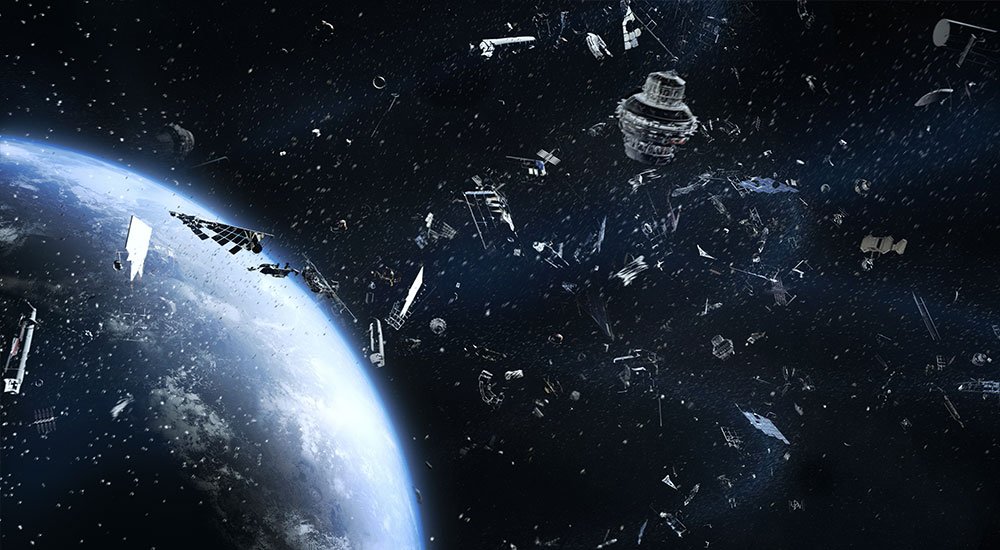Space Satellites: A Growing Problem in Earth's Orbit
Human fascination with space is boundless, and our progress in exploring it can be seen as a testament to our ability. We’ve sent dogs, jellyfish, men and more than a few satellites into space to help aid our understanding of the universe. Yet, out of all the things named, one has revolutionized our world—the proliferation of space satellites. Satellites enable communication, navigation, and remote sensing among other essential functions that are so commonplace that we take them for granted. However, as our dependence on satellites increases, so does the problem that they pose in Earth's orbit.
The Satellite Boom
Space exploration has a rich history, beginning with the launch of Sputnik by the Soviet Union in 1957 and the subsequent space race with the United States. The Apollo program saw the first humans set foot on the moon in 1969 and since then, we haven’t stopped. Human presence in space continues aboard the International Space Station (ISS), where astronauts conduct research, experiments, and maintain the station. Robotic missions like the Mars rovers (Spirit, Opportunity, Curiosity, and Perseverance) have unveiled the mysteries of the Red Planet, and probes like New Horizons have provided us with our first close-up views of Pluto. The launch of SpaceX's Crew Dragon and other commercial space endeavors signify a promising future for human spaceflight.
Over the last decade, we’ve witnessed an unprecedented boom in the number of satellites launched into orbit. This surge is largely due to the rise of commercial satellite constellations. Companies like SpaceX, OneWeb, and Amazon's Project Kuiper are building vast networks of satellites to provide global broadband internet coverage. While these endeavors hold great promise for connectivity, they also contribute to many issues in Earth's orbital environment.
Space Debris
One of the most pressing problems arising from space exploration is space debris. Earth's orbit is now littered with defunct satellites, rocket stages, and fragments from past missions. Even small pieces of debris can pose a significant threat to operational satellites and the ISS. Collisions between active satellites and space debris can lead to the creation of even more fragments, exacerbating the problem. The launch and maintenance of satellite constellations contribute to the escalating problem of space traffic management. As more satellites are launched, the risk of in-orbit collisions rises. This necessitates enhanced coordination and regulation to prevent catastrophic accidents. The sustainability of space activities is of growing concern. As satellites continue to multiply, responsible space practices and sustainable technologies become essential. A lack of regulations and cooperation among satellite operators could endanger the long-term use of space for both current and future generations.
Solutions and Mitigation Efforts
Millennial Software’s approach to the space domain migrates legacy applications to the cloud, allowing systems to scale to meet the increasing demands of spacecraft analysis in geosynchronous orbit, and those beyond geosynchronous orbit (XGEO). By improving the efficiency of aerospace applications, faster timelines can help mission centers analyze the latest threats. Leveraging modern tools and frameworks, we’re able to design efficient processors to propagate ephemeris, analyze flight safety, and apply machine learning to orbital problems such as maneuver and evasion in a scalable manner (which is not possible with traditional desktop applications used for flight safety).
To ensure the sustainability of space activities and protect valuable satellites and spacecraft, collaboration across space agencies, research institutions, and the private sector is essential. Together, we can develop and deploy AI and ML solutions for space satellite debris management, and address the problems posed by space satellites in a multi-faceted approach:
Space Debris Mitigation: Space debris is a threat to crewed missions, such as those to the ISS. Avoiding collisions with debris is a primary concern for mission planners and astronauts. These objects can include old satellites, spent rocket stages, fragments from previous collisions, and other discarded materials. By utilizing cloud application, space agencies and private companies can explore innovative technologies to capture and remove space debris. Satellite operators adhere to best practices for end-of-life disposal and actively deorbit defunct satellites to reduce space debris.
Regulatory Framework: Governments and space agencies can work together to address the space debris issue. The Inter-Agency Space Debris Coordination Committee (IADC) and United Nations Office for Outer Space Affairs (UNOOSA) play important roles in coordinating international efforts. International cooperation is crucial to establish regulatory frameworks that govern satellite deployments, frequency spectrum use, and space traffic management.
Sustainable Practices: The space industry can adopt sustainable practices and technologies, such as reusable equipment, technology, and resources, to minimize the environmental impact of satellite launches. New guidelines and regulations encourage satellite operators to design spacecraft to minimize the creation of space debris and to deorbit satellites at the end of their mission life to reduce the long-term debris problem.
Light Emission: Space light pollution impairs the quality of astronomical observations and research. Astronomers need dark skies with minimal light pollution to study the universe effectively. To conduct high-quality astronomical research and observations, observatories and telescopes are often situated in remote and light-protected areas to minimize the effects of space light pollution. This can be costly and logistically challenging. Satellites should be designed with responsible lighting systems and surfaces to minimize light pollution, ensuring that astronomers and stargazers can continue to enjoy clear views of the night sky.
Conclusion
Space exploration is a journey that unites humanity in the pursuit of knowledge. They’ve also presented significant challenges to our planet’s orbit, from space debris and light pollution to frequency spectrum congestion and space traffic management issues. Addressing these problems requires pioneering solutions and a collective effort from governments, space agencies, and commercial operators. As we continue to expand our presence in space, it’s imperative that we do so responsibly, with an eye toward preserving long-term sustainability. Only through cooperation and the development of innovative technology can we ensure that the benefits of satellites are not overshadowed by the problems created by them in Earth's orbit.



